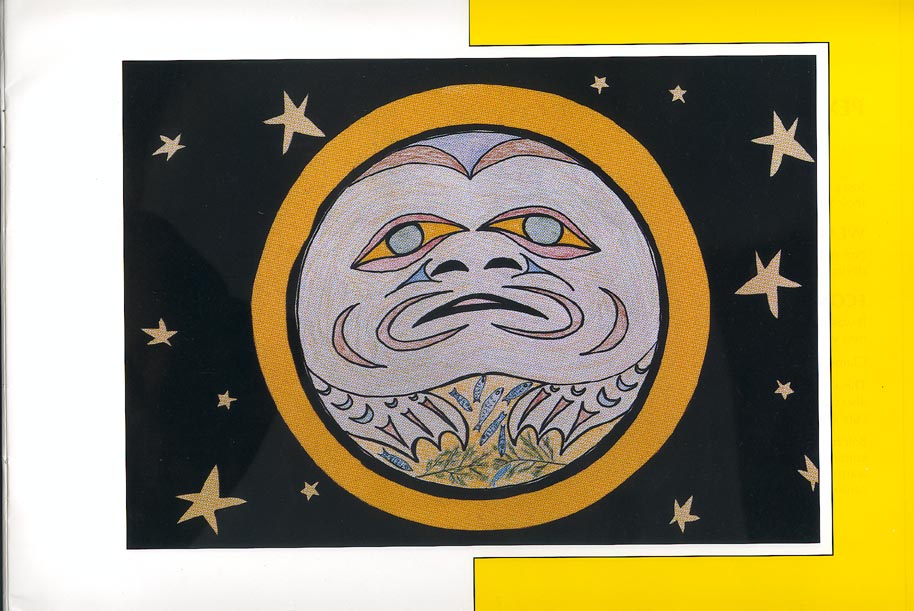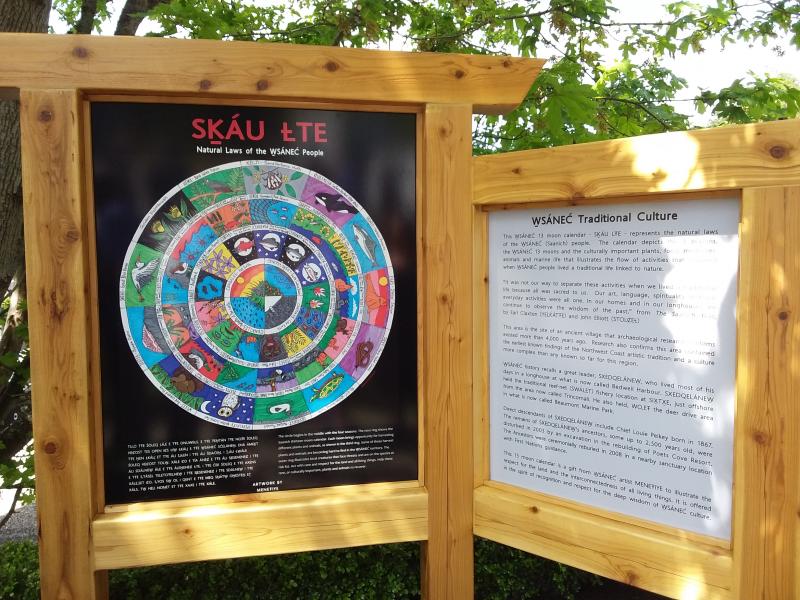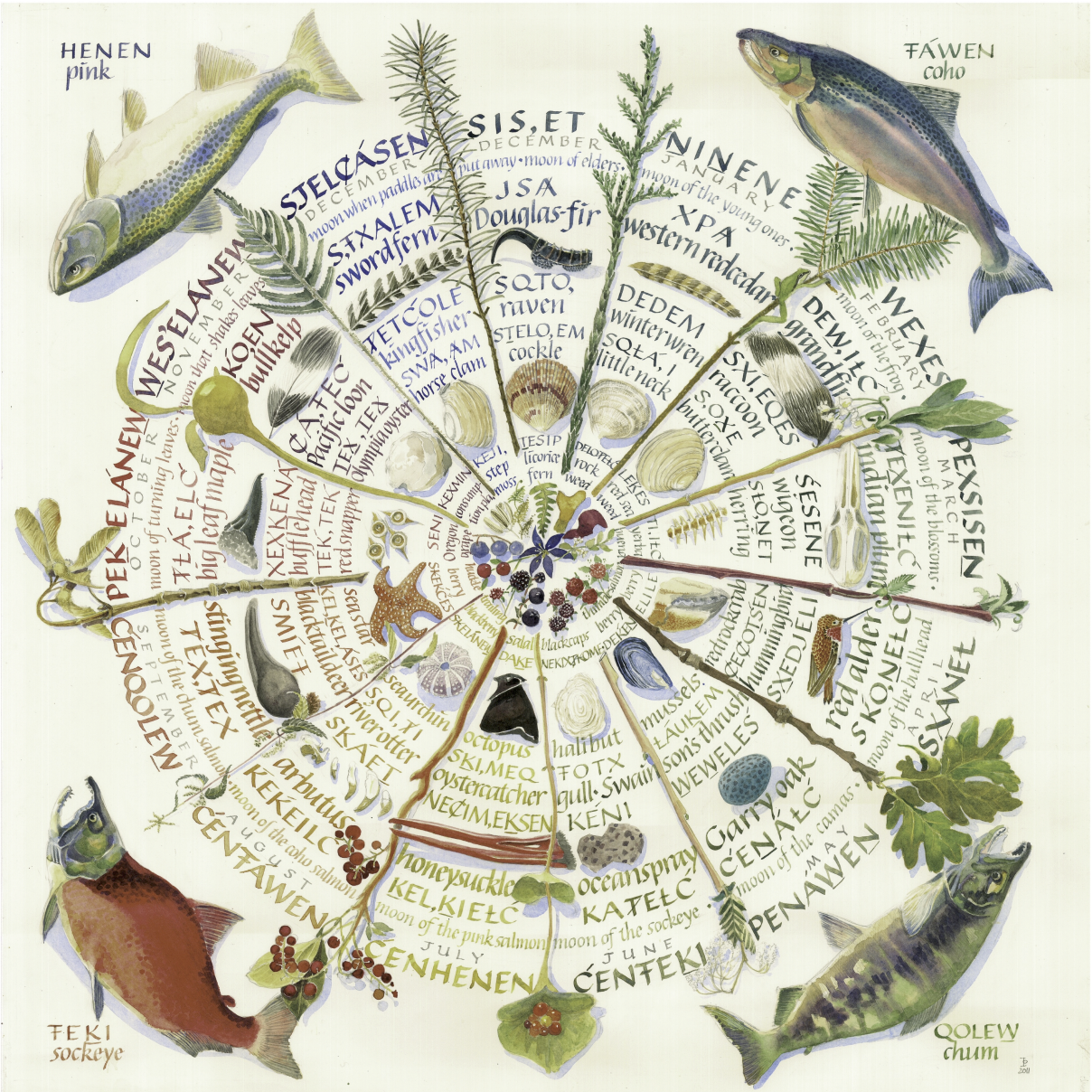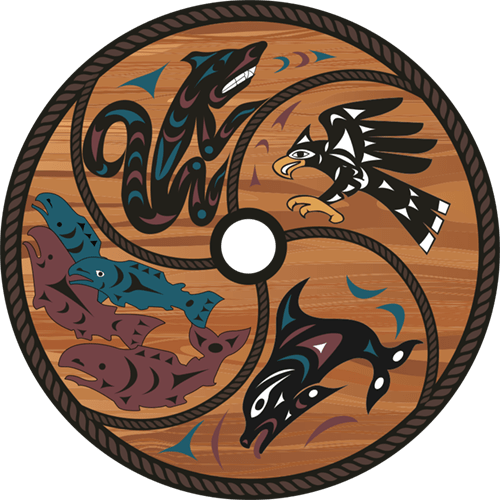This time of year is traditionally known as WEXES-Moon of the Frog.
The frog on the face of the moon represents DOLUANW – the Keeper of the Sacred Season. It is time to gather food & medicine. The W̱SÁNEĆ People place cedar boughs at the shore so herring will lay roe on them.
CONNECTIONS AND BACKGROUND INFORMATION
The W̱SÁNEĆ People designated this month to sacredness and purification.
For the W̱SÁNEĆ Peoples, this moon, in particular, is significant because the frog acts as a witness and a messenger. The frog announced the Sacred Season of Plenty. Because the frog was honoured as the Keeper of the Sacred Season, it was often presented on totem poles and in artwork to show that an important event had occurred.
During this moon, the wonder of nature repeats an amazing process: Mother Earth warms up and the hibernating frog wakes from its winter sleep, announcing the coming of spring.
WEATHER
As the Northern Hemisphere moves closer to the Sun, the more the Earth warms. Rains diminish and more sunshine is evident.
ECONOMIC ACTIVITIES
This moon was especially welcomed because it signalled that the ocean had become safer to travel on and it was time to put the canoes back into the water. Herring and herring roe, a source of food, were collected by placing cedar branches along the shore for the herring to lay their eggs upon. Herring was also dried into a delicacy called QELEJ and stored for future use. The earliest runs of herring were in Fulford Harbour on Saltspring Island.
CULTURAL ACTIVITIES
The appearance of the frog was a sign to end the activities of Winter ceremonial dances and move outdoors to prepare for the season when the Salmon people would return.
THINGS TO THINK ABOUT
- Who or what do you honour in your life?
- What signals does nature give us to start or end things?
- In what ways do you and your family prepare for spring?
This illustration of the W̱SÁNEĆ calendar, SḴÁU ȽTE, by artist MENEŦIYE is located on S,DÁYES (South Pender Island). The illustration depicts the four seasons, the 13 moons and the culturally important plants, food, medicines, animals and marine life.
Based on the sacred interconnectedness of all things, the observation of the 13 moons is part of W̱SÁNEĆ natural law. Each of the 13 moons provides guidance as to what cultural and economic activities are best suited for the time of year, as well as what weather to expect and what food is most abundant.
Artist Briony Penn, copyright Tsawout First Nation.
“It was not our way to separate these activities when we lived a traditional life because all was sacred to us. Our art, language, spirituality and our everyday activities were all one. In our homes and in our longhouses we continue to observe the wisdom of the past.”
~The Saanich Year, by Earl Claxton (YELḰÁTŦE) and John Elliott (STOLȻEȽ).
The 13 moons don’t line up exactly with the Gregorian 12-month calendar, but loose associations between months and the moons can be made, as shown above.
All information in this posts was sourced from this document.
RECENT POSTS
How are we doing?
NINENE – MOON OF THE CHILD (Mid December to Mid January)
The face of the young man represents youth, a new beginning, the rebirth of the animal world, and the new edible shoots. This is the Saanich New Year. The moon’s yellow hair is the returning light to the world.










